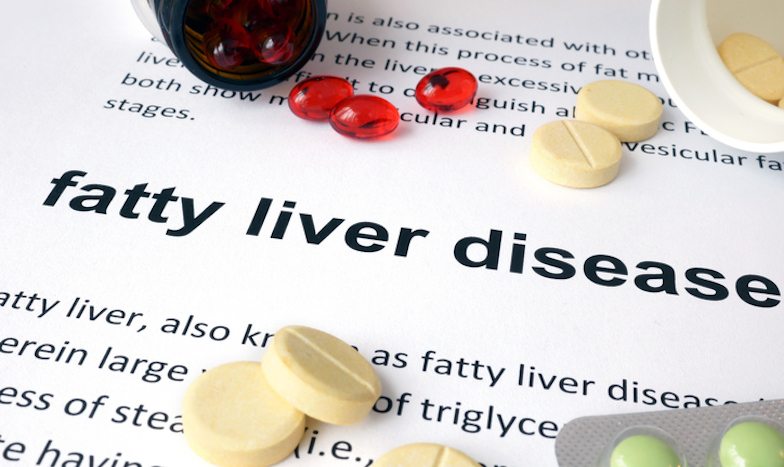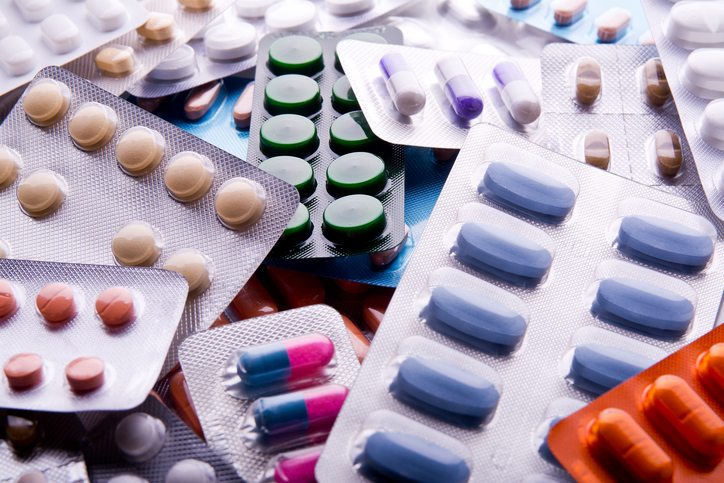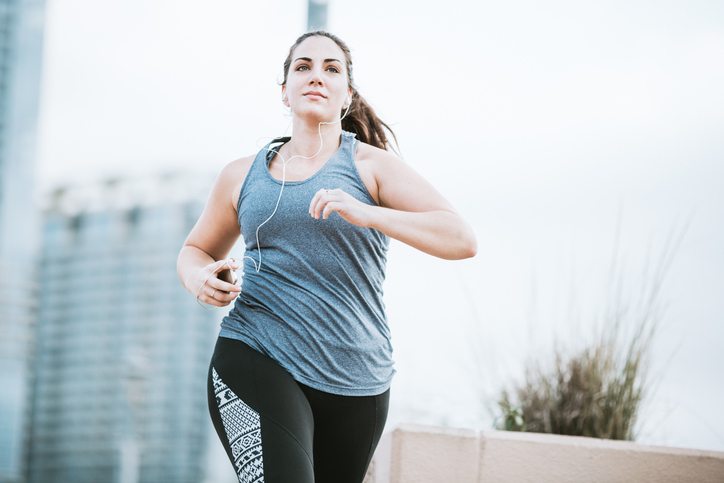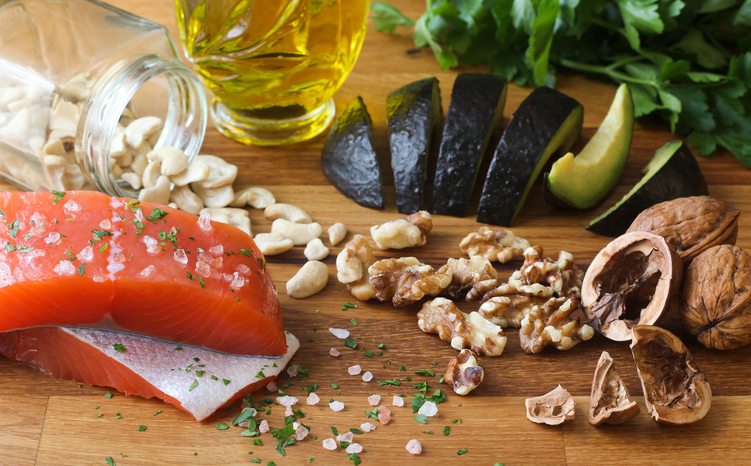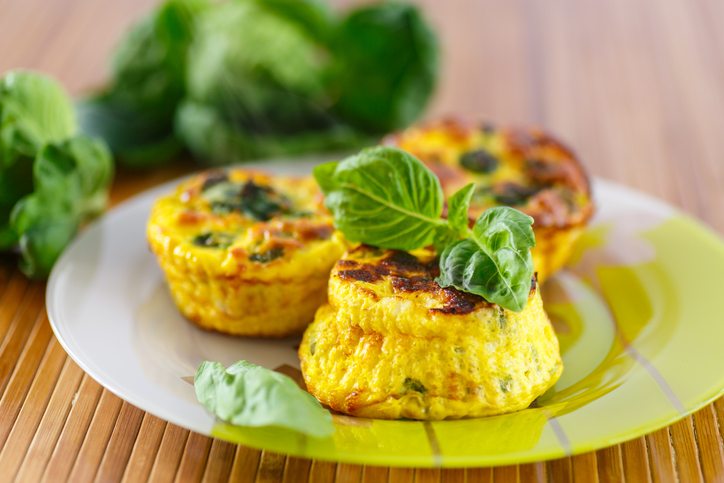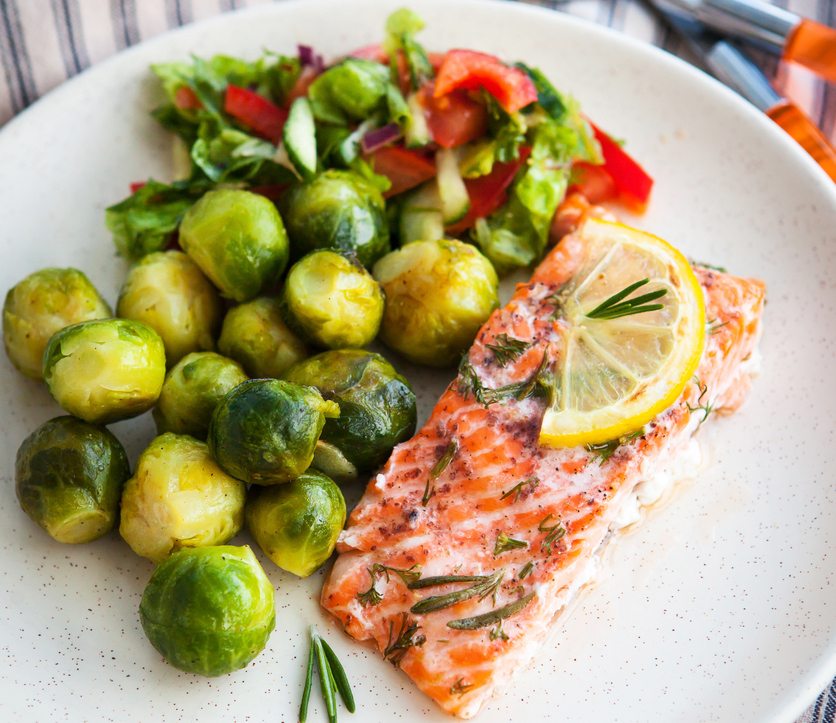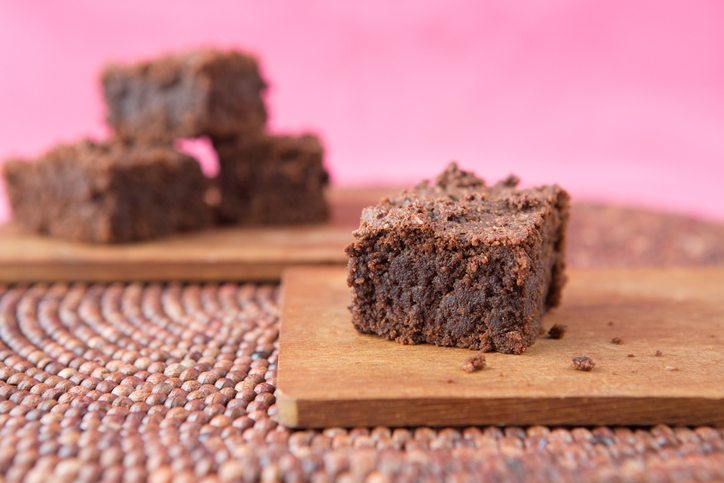Are you tired and bloated with dry skin that’s itchy? These experts say one-third of the UK population has liver disease, yet many don’t even know they have it
Fatty liver is the leading liver disease in the U.S. and all of western Europe. In fact, it’s estimated that more than 18 million people in the UK alone have it.
If left untreated, the disease can result in irreparable liver damage – and women are especially susceptible.
Wellness experts Kristin Kirkpatrick and Ibrahim Hanouneh offer a detailed overview of the disease, its causes and how to prevent and treat it in their book Skinny Liver: Lose the fat and lose the toxins for increased energy, health and longevity.
What is fatty liver?
According to Kirkpatrick and Hanouneh, nonalcoholic fatty liver disease (NAFLD) occurs when there is a buildup of fat deposits in the liver tissue.
This often happens when someone eats too much unhealthy fat. If there’s too much fat coming into the body and accumulating, fat cells (triglycerides) build up in the liver cells.
Insulin resistance is another cause
Insulin resistance is another cause, which occurs when glucose builds up in the blood and increases insulin and triglyceride levels.
Increased levels of insulin can inhibit the breakdown of fat in the body and stimulate the creation of new fatty acids.
How serious is it?
NAFLD is associated with a number of other diseases, including type 2 diabetes, heart disease, inflammatory bowel disease, celiac disease, PCOS, sleep apnea, hypothyroidism, lipid abnormalities and hypertension – meaning, if you have NAFLD, you’re more likely to have one or more of these health problems (and vice versa).
Over time, the buildup of fat in the liver can lead to inflammation and progressive scarring called fibrosis and cirrhosis.
If cirrhosis (the latest stage of scarring) occurs, liver cells are replaced with scar tissue, which hardens the liver and impedes its ability to function properly.
What are the signs and symptoms?
Liver damage often comes with no symptoms. That’s why a lot of people with NAFLD are completely unaware that they have it.
However, if fat, inflammation and scar tissue build up in the liver, one can experience persistent fatigue, muscle weakness, bloating, nausea and vomiting, abdominal pain, memory loss, mental confusion, easy bruising, itchy skin and dark urine.
If you think you might be experiencing liver problems, doctors can determine if you have NAFLD by performing a blood test or an ultrasound scan.
Who’s at risk?
Inherently, adults over the age of 60 and women are more susceptible to NAFLD.
The liver becomes less efficient with age, and women’s livers take longer to breakdown material.
According to a study done in China, almost 19 percent of women aged 45 to 55 had NAFLD, and that number rose to almost 28 percent in women over 55.
Almost 19 percent of women aged 45 to 55 had NAFLD
However, everyone (not just women and the elderly) is susceptible. NAFLD is usually caused by certain lifestyle patterns, such as:
Unhealthy eating habits
People who consume a lot of sugary foods, refined carbohydrates, soda (both regular and diet), alcohol and/or meat and other foods that are high in saturated fat and cholesterol heighten their risk of developing NAFLD.
Being overweight
People with BMI over 25 who carry excess weight in the midsection (apple-shaped) are more likely to develop NAFLD and experience further liver damage.
Contracting viruses
Certain viruses, especially hepatitis infections, can cause liver inflammation and damage.
Metabolic syndrome
Metabolic syndrome is diagnosed when someone has at least three of the following: elevated blood pressure, insulin resistance or elevated fasting blood sugar, excess abdominal fat, high triglycerides and/or low HDL. Those who have metabolic syndrome are likely to have NAFLD along with it.
How do you prevent and treat fatty liver?
Luckily, NAFLD is both preventable and treatable. There’s no medication prescribed to treat the disease, so lifestyle changes are the most common and effective ways to manage it.
Skinny Liver offers a number of ways to get your liver health back on track:
Cut back on the booze (or try going dry)
It’s no secret that alcohol isn’t great for your liver. Even though NAFLD isn’t caused by alcohol, excessive consumption can worsen the disease.
Give yourself a limit: Before you start drinking, decide how many servings of alcohol you’ll allow yourself and stick with it (two drinks per day for men, one for women is moderate).
Pace yourself: Take small sips, and take breaks in between drinks.
Take days off: Try to have at least two non-alcoholic days per week.
Find new ways to socialise: Alcohol doesn’t always have to be a part of spending time with friends. Try taking a workout class, going for a walk or having some delicious virgin cocktails at lunch instead of your usual drink of choice.
Get enough sleep (at least seven to nine hours)
Achieving a good night’s sleep is a struggle we all face at times. However, there are a few things you can do to help get the rest you need.
Establish a consistent sleep schedule: Try to go to bed and wake up at the same time each day (yes, even on weekends!)
Spend time outside: Being in natural light during the day will keep your body’s biological clock running on time.
Avoid stimulants four to six hours before bed: Things like coffee, tea, soda, chocolate and cigarettes can keep you awake at night, so try not to consume them close to bedtime.
Manage stress
High levels of stress hormones, such as cortisol, can cause widespread inflammation (including in the liver) and worsen existing liver problems.
Use your time-management skills: Prioritise what needs to be done today and what can be deferred until tomorrow.
Learn how to say no: Save your time and energy for important activities and tasks.
Delegate tasks that don’t need to be done by you: It’s hard to relinquish control sometimes, but your mental state will improve when you do.
Incorporate relaxation techniques into your daily routine: Try meditation, hypnosis or acupuncture to help find your zen.
Be mindful about your medications
Excessive use of certain medications, such as acetaminophen (Tylenol), statins (drugs used to help lower cholesterol), corticosteroids and antifungal drugs, can harm the liver, so limit your intake if you can.
Next time you feel a headache coming on, don’t reach for the over-the-counter pain reliever.
Instead, try brewing a pot of tea with mint, basil and/or ginger or applying a cold washcloth to your forehead.
Limit exposure to toxins and chemicals
Exposure to high levels of toxins like mercury, lead and PCBs (polychlorinated biphenyls—often found in old lighting fixtures and electrical appliances and contaminated food and water) is associated with an increase in liver damage.
Although it’s hard to completely avoid them, there are simple swaps you can make to lessen your exposure to these toxins.
- Hang dry clothes to let the chemicals air out.
- Use organic, natural cleaning solutions.
- Buy organic produce, and rinse all fruits and vegetables before eating.
- Use glass food storage containers instead of plastic.
- Avoid using harmful chemicals on your lawn.
Move your body
Research shows that people who exercise regularly have a significantly lower risk of developing NAFLD.
Exercise can also reduce insulin resistance and promote weight loss, which can, in turn, heal liver damage. Exercise increases the muscles’ ability to use fat as energy, which prevents excess fat from being stored in the liver.
Exercise increases the muscles’ ability to use fat as energy
A 2011 UK study found that sedentary adults with NAFLD who performed eight weeks of resistance training decreased their liver fat cells by an average of 13 percent.
Aim for 30 minutes of moderate-intensity aerobic exercise per day, as well as two days of resistance training per week.
Eat Well
The Mediterranean diet is a great approach for reversing metabolic syndrome and liver conditions. The seaside diet consists mainly of fruits and vegetables, whole grains, legumes, healthy fats, seafood and small amounts of dairy products.
These foods, which contain omega-3 fatty acids, fibre and phytochemicals, are low on the glycemic index, help regulate blood sugar levels and promote lipid control.
The Mediterranean diet is a great approach for reversing metabolic syndrome and liver conditions
The diet also avoids red meat, which can damage the liver by creating an overload of iron stores, and pro-inflammatory foods such as refined carbohydrates and simple sugars.
Eating probiotic foods such as miso, kimchi, sauerkraut, tempeh and kefir will also help the liver by repopulating the gut with healthy bacteria.
Other foods and nutrients to eat for a healthy liver are green tea, soy protein, spices, vitamin E (almonds, seeds, greens and plant oils are great sources) and choline (found in eggs, peanuts, meat, pasta and rice).
Maintain a healthy weight
Maintaining a healthy weight will help you avoid insulin resistance and metabolic syndrome. It will also help protect your liver and potentially reverse some liver disorders.
You’ve heard it a million times, but the best way to maintain a healthy weight is to eat right and exercise on the regular.
The Skinny Liver Diet
Along with a wealth of information and tips, Skinny Liver also features a four-week diet plan to help people lose weight and improve their liver health.
Included are loads of recipes that promote liver and overall health. Check out some of the delicious creations below.
Veggie Quinoa Quiche Cups
Quinoa is the star here; this ancient seed adds a protein boost to this cheesy, eggy dish.
Serves 6
Ingredients:
- Nonstick cooking spray
- ½ cup uncooked quinoa, rinsed
- 2 tablespoons olive oil
- 1 Vidalia onion, thinly sliced
- 4 cups washed and torn or chopped spinach leaves
- 1 garlic clove, minced
- ½ shallot, chopped
- Sea salt and freshly ground black pepper
- ½ cup shredded low-fat Cheddar cheese
- ½ cup grated Parmesan cheese
- 2 large eggs, plus 4 large egg whites, lightly beaten
Directions:
1. Preheat the oven to 375°F.
2. Line a six-cup muffin pan with paper liners and spray with nonstick cooking spray; set aside.
3. Combine one cup of water and the quinoa in a small saucepan and bring to a boil.
4. Lower the heat to a simmer, cover, and continue to cook for 15 minutes, then remove from the heat, remove the lid, and allow the cooked quinoa to cool.
5. Heat the olive oil in a large skillet over medium heat, add the onion, and cook until the onion is translucent, 3 to 4 minutes.
6. Stir in the spinach, garlic, and shallot. Season to taste with salt and pepper and continue to cook until the spinach is wilted, about 2 more minutes.
7. Remove the pan from the heat and let the mixture cool.
8. Combine the cooked quinoa, the spinach mixture, and the cheeses in a large mixing bowl.
9. Pour in the eggs and egg whites and mix well to combine the ingredients.
10. Divide the batter evenly among the prepared muffin cups. Bake for 35 minutes, or until the quiche tops are golden brown.
Note: These will stay fresh in the fridge for a few days, but they don’t freeze well.
Herb-Roasted Salmon with Brussels Sprouts
Garlic flavours this heart-healthy dish; the roasting brings out the flavour of both the fish and the nutritional powerhouse Brussels sprouts.
Serves 6
Ingredients:
- ¼ cup garlic-infused olive oil
- 1 teaspoon sea salt
- ¾ teaspoon freshly ground black pepper
- 6 large garlic cloves
- 1 medium-size shallot, chopped
- 6 cups Brussels sprouts, trimmed and sliced
- ¾ cup white wine
- 2 pounds wild-caught salmon fillet, skinned, cut into 6 portions
Directions:
1. Preheat the oven to 450°F.
2. Combine the garlic-infused olive oil, ½ teaspoon of the salt and ¼ teaspoon of the pepper in a small bowl.
3. Halve the garlic cloves and toss them with the shallot, Brussels sprouts and 3 tablespoons of the seasoned oil in a large roasting pan.
4. Roast in the oven, stirring once, for 15 minutes.
5. Meanwhile, add the white wine to the remaining oil mixture. Remove the pan from the oven, stir the vegetables, and place the salmon fillets on top.
6. Drizzle the fillets with the wine mixture, then lightly season each fillet with salt and pepper.
7. Bake the salmon until it is just cooked through, 5 to 10 minutes more.
Avocado Brownie Bites
You may be surprised at the secret ingredient here: avocado, which deepens the chocolate flavour and adds creaminess. These bites are so rich and decadent, you won’t need more than one to be satisfied.
Makes 16 (small brownie bites)
Ingredients:
- Nonstick cooking spray
- 1 ripe avocado, peeled and pitted
- 4 tablespoons butter, melted
- 1 large egg ½ cup light brown sugar
- ½ cup pure maple syrup
- 2 teaspoons pure vanilla extract
- ¾ cup unsweetened cocoa powder
- ¼ teaspoon sea salt
- 1¼ cups gluten-free flour
- ½ cup dark chocolate chips, melted
Directions:
1. Preheat the oven to 350°F. Spray an 8-inch square baking pan with nonstick cooking spray.
2. Mash the avocado in a large bowl until smooth, then add the melted butter, egg, brown sugar, maple syrup, vanilla and 2 teaspoons of water. Mix well to combine.
3. Add the cocoa powder and stir until fully incorporated and free of any large lumps.
4. Combine the flour and salt in a separate bowl, then stir in the avocado mixture and melted chocolate.
5. Spread the batter evenly in the prepared pan and bake for 35 to 40 minutes, until the brownies are cooked through.
6. Allow the brownies to cool in the pan before cutting them into 16 brownie bites.
Kristin Kirkpatrick, MS, RD, LD, is the manager of Wellness Nutrition Services at the Cleveland Clinic Wellness Institute in Ohio, USA, where she oversees nutrition-related services at the Centre for Integrative & Lifestyle medicine.
She is a regular on The Dr. Oz Show and has contributed to the New York Times, Wall Street Journal and the TODAY Show.
Ibrahim Naouneh, MD, formerly of the Cleveland Clinic, currently works with Minnesota Gastroenterology. He specialises in the diagnosis and treatment of adult and paediatric digestive system and liver disorders.
Skinny Liver: Lose the fat and lose the toxins for increased energy, health and longevity is available to buy on Amazon.
More Healthista Content:
9 top tips for optimum gut health from this award-winning nutritionist
9 natural insomnia remedies to help you sleep better tonight
F45 Nutritionist reveals how you can snack smarter and cut those cravings
Like this article? Sign up to our newsletter to get more articles like this delivered straight to your inbox.




